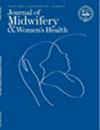Social Media and Nutritional Guidelines in Pregnancy
Abstract
Introduction
Nutrition impacts health outcomes of pregnant people and their fetuses. Discussing nutrition with patients may be challenging for health care providers. In this vacuum, patients use social media for health information during pregnancy. Little is known about the type and quality of nutrition information that is available on social media. The aim of this study was to qualitatively explore the pregnancy nutrition messages contained in social media videos for content and evaluate the information's concordance with evidence-based guidelines.
Methods
A review of current social media video content for nutrition in pregnancy was conducted across 4 platforms: YouTube, Instagram, Facebook, and TikTok. Content analysis was used to descriptively and categorically analyze the social media video content.
Results
In the 62 social media videos reviewed, most were not consistent with established guidelines, were inaccurate, or presented a homogenous and unrealistic image of the pregnant person. Four categories of nutrition in pregnancy social media information emerged: what to eat, what not to eat, what I ate: aspirational, and what I ate: rebellion. Few videos were produced by health care organizations. Some were produced by anonymous organizations, with the majority made by pregnant or postpartum people. Many were testimonial or confessional in style. Despite regulations requiring identification of paid posts and advertisements, it was difficult to discern if videos were authentic sharing of patient experiences or advertisements.
Discussion
There is incorrect and incomplete information on social media surrounding nutrition in pregnancy. Professional guidelines for nutrition in pregnancy are available but are not as accessible to patients as social media videos. Social media use is associated with disordered eating and increased risk of anxiety and depression. However, targeted interventions by health care providers that use social media platforms have been successful in the distribution of credible health information. Midwives and other health care providers should share evidence-based nutrition recommendation with patients to facilitate meaningful conversations around nutrition in pregnancy during in person and online interactions.

 求助内容:
求助内容: 应助结果提醒方式:
应助结果提醒方式:


